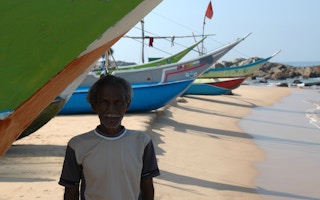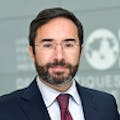This week’s World Bank spring meetings will kick-start the replenishment of the International Development Association – the largest source of development finance for the world’s poorest people. The event cannot come soon enough. With extreme poverty, climate change, and a worsening debt crisis jeopardising progress toward the United Nations Sustainable Development Goals (SDGs), IDA is more important than ever.
For many recipient countries, IDA often represents the only reliable, sustainable source of development finance. For donors, it offers good value for money: for every dollar mobilised through IDA, recipient countries receive around US$4 to support their development. But as governments seek an ambitious replenishment of IDA’s resources this year, we must maximise the impact of IDA dollars already in circulation.
With up to two-thirds of those living in extreme poverty expected to reside in fragile and conflict-affected countries by 2030, successful implementation of IDA-supported development projects in challenging contexts is vital. But, as new research by the International Rescue Committee (IRC) shows, disbursing IDA funds to projects that positively affect people’s lives must overcome major barriers.
During one recent IDA cycle, around 50 per cent of its financing commitments in conflict-affected least-developed countries were not disbursed. The IRC’s research highlights limited institutional capacity, especially in conflict-affected countries.
Such gaps can be explained largely by the World Bank’s low risk threshold and an operating model that works primarily with and through national governments. This model can lead to project delays and suspensions, especially in conflict-affected countries, not least because of limited institutional capacity and a lack of relevant expertise and experience.
“
This week’s World Bank spring meetings offer a valuable opportunity to reflect on the International Development Association’s (IDA) critical role as a source of hope for those most in need – and commit to enhancing its impact even further.
This highlights a crucial point. Too often, discussions about development goals like the SDGs focus on two gaps – in financing and policy – while failing to recognise the implementation gap. But finance and policy alone cannot overcome implementation bottlenecks; technical assistance and other support is also vital. This is a key focus of the United Nations Office for Project Services (UNOPS), which I have led for exactly one year.
UNOPS runs operations in over 80 countries on behalf of the UN system and global partners, such as the World Bank. The majority of our work takes place in fragile and conflict-affected settings, and we are a major channel for implementing IDA-financed projects, among other humanitarian, development, and peace-and-security initiatives. We also help recipient governments make the most of the IDA funds they receive, working alongside other UN agencies to accelerate project delivery, overcome delays, and ensure the intended results.
Our experience, particularly in conflict zones, demonstrates the overwhelming positive impact IDA funds can have when we get implementation right. In South Sudan, for example, IDA and UN agencies worked together to implement a project focused on increasing poor and vulnerable households’ access to temporary income opportunities.
Since then, the security situation has improved sufficiently to begin handing full ownership of projects – which has reached over 420,000 people across ten counties – back to the South Sudanese government and local communities.
In Mozambique, UNOPS is working alongside the World Bank and the national government to restore basic services for 680,000 people who have been internally displaced as a result of the conflict in the country’s north or who are hosting displaced communities and returnees.
In Yemen, where the Bank cannot work through the government, the World Bank, with IDA financing, has worked with UN partners on the ground to deliver access to basic services. One project, implemented by UNICEF, the World Health Organization, and UNOPS, provided health and nutrition services to more than eight million Yemenis at more than 2,000 locations and by relying on mobile outreach teams. Such engagement helps to preserve pre-crisis human-capital gains and a degree of institutional stability, both of which are essential to the eventual post-conflict recovery.
This capacity to implement projects even in crisis-affected areas, including conflict zones like Yemen, is essential to deliver on the SDGs. But so are efforts to prevent crises. These are particularly cost-effective interventions: for every dollar invested in prevention, around US$16 are saved in the long term. With any intervention, timing is key. As the World Bank has pointed out, it is imperative to invest IDA funding early, especially in fragile contexts.
The World Bank’s newly expanded Crisis Preparedness and Response Toolkit promises to help countries respond to emergencies, from conflict to climate-related disasters, and prepare for future shocks.
For example, it includes measures that would allow governments to reallocate up to 10 per cent of undisbursed World Bank financing toward emergency response. This, together with other tools and welcome changes under the Bank’s evolution and reform agenda, offers much-needed flexibility to countries in crisis.
This week’s World Bank spring meetings offer a valuable opportunity to reflect on the IDA’s critical role as a source of hope for those most in need – and commit to enhancing its impact even further. That means not only replenishing its resources, but also recognising and addressing implementation gaps.
Jorge Moreira da Silva, Executive Director of the United Nations Office for Project Services, is a former minister of environment and energy for Portugal and former director of the OECD Development Cooperation Directorate.
© Project Syndicate 1995–2024









